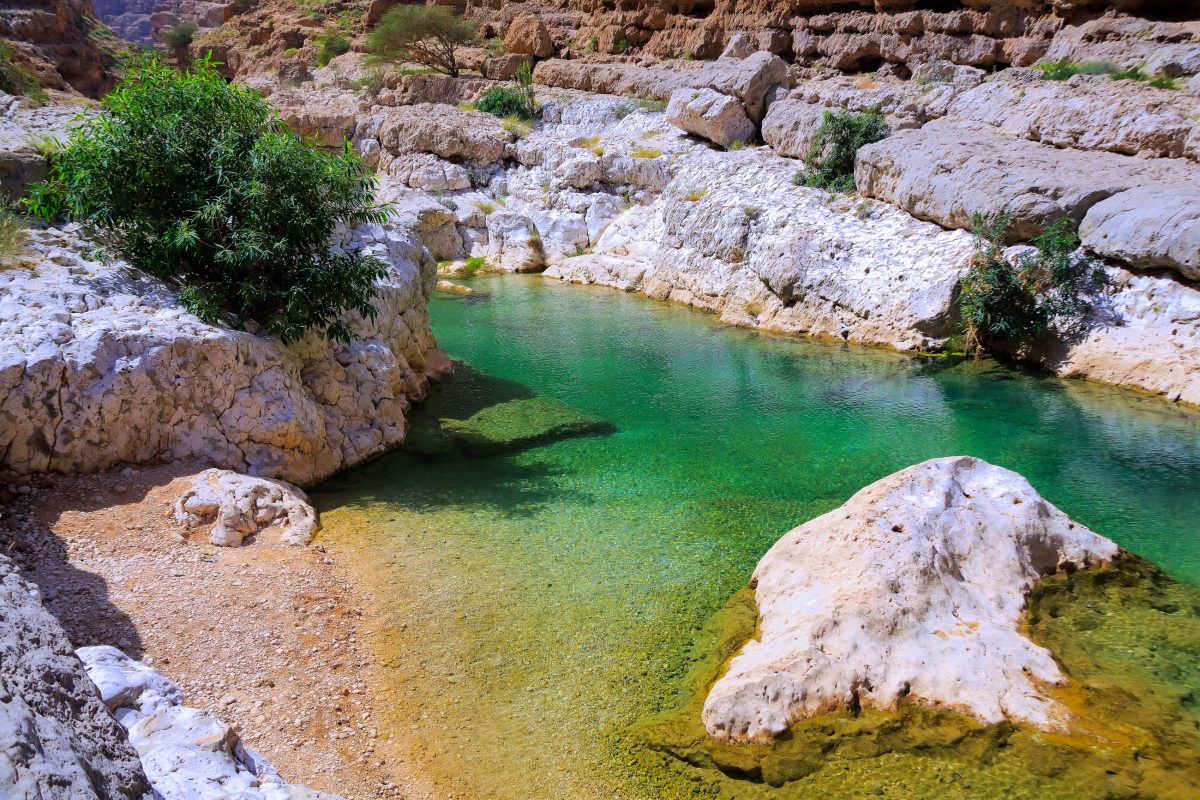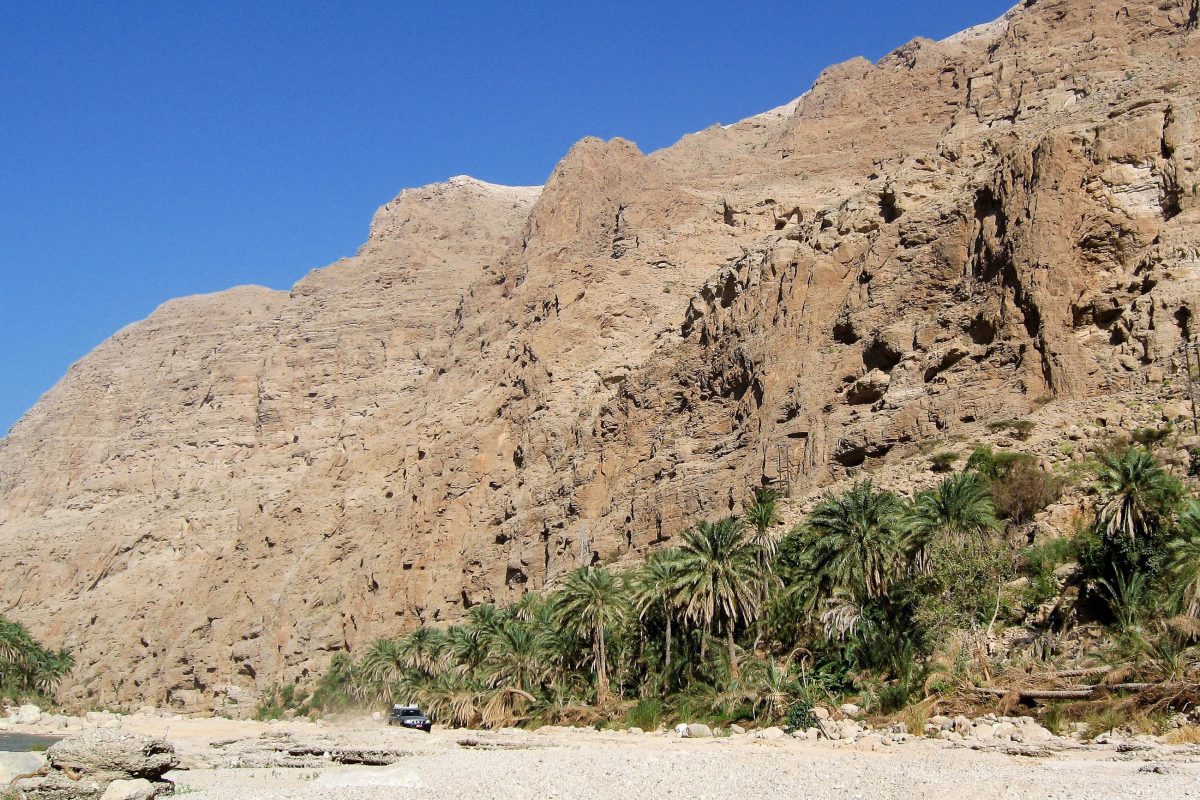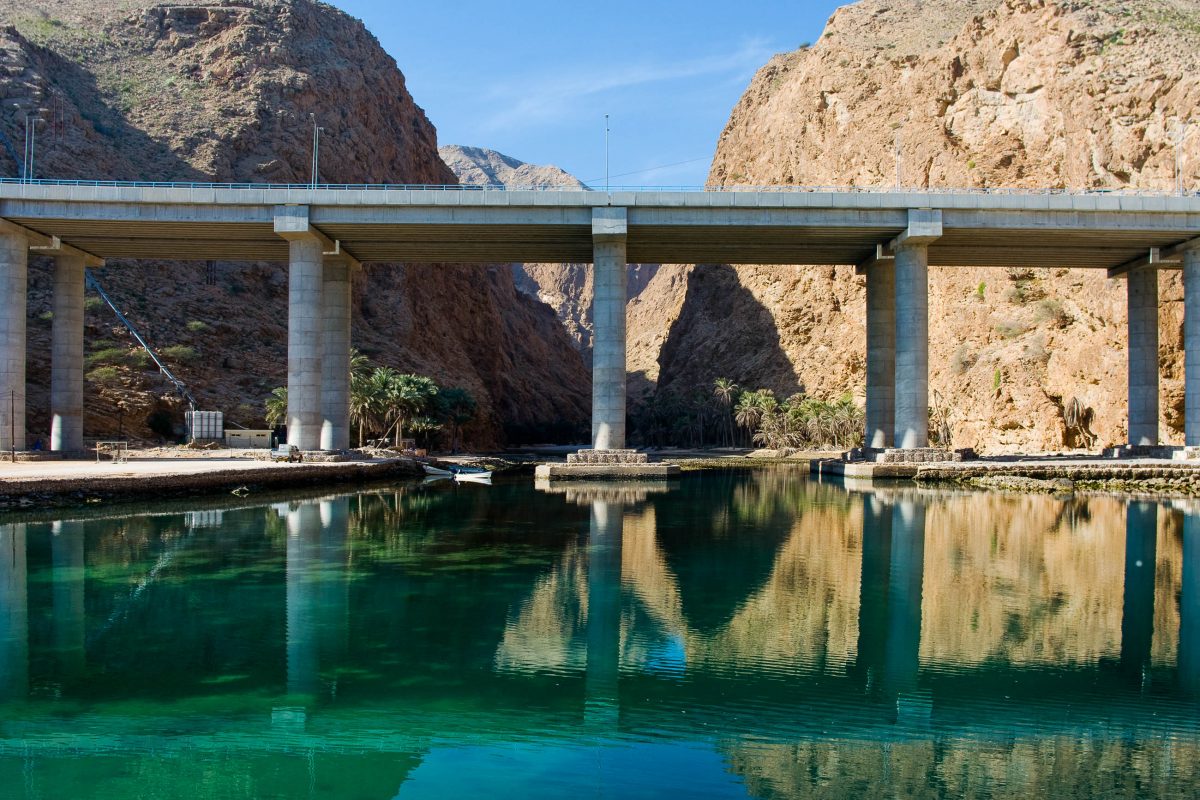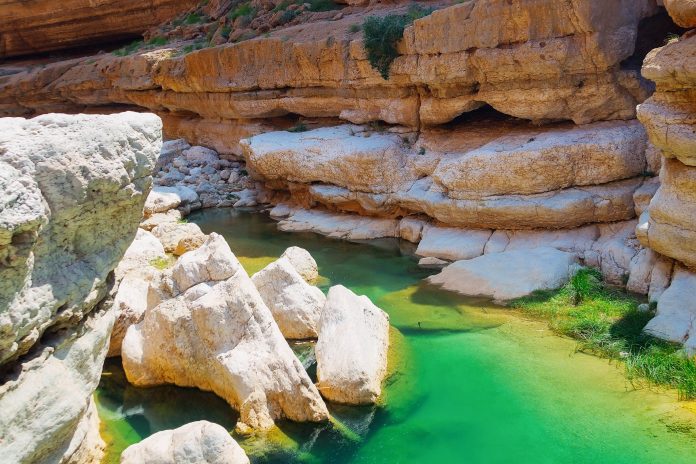Die beiden Wadis Shab und Tiwi gehören ohne Zweifel zu den schönsten Wadis im Oman. Nur eine dreiviertel Stunde nördlich von Sur gelegen sind die Wadis ein Must-See für jeden Oman-Reisenden.
Die beiden paradiesischen Wadis Shab und Tiwi liegen an der Küstenstraße Omans von Muscat nach Sur in der Sharqiyah-Region. Beide Wadis wurden vom verheerenden Zyklon, der den Oman im Jahr 2007 heimsuchte, stark verwüstet. Die Natur hat die Schäden in den Wadis jedoch zum Großteil wieder repariert und beide Täler erstrahlen mittlerweile ganz in ihrer gewohnten landschaftlichen Schönheit.
Inhaltsverzeichnis
BILDER: Wadi Shab und Wadi Tiwi
Fotogalerie: Wadi Shab und Wadi Tiwi
Wadi Shab
Das Wadi Shab zählt mit seinen senkrecht aufstrebenden Felswänden, smaragdgrünen Palmen und türkisblauen Pools zu den 10 schönsten Wadis im Oman. Im Jahr 2012 fungierte eine 27m hoch gelegene Plattform im malerischen Wadi Shab als letzte Station des Red Bull Cliff Diving.
Das Wadi Shab kann am besten zu Fuß erkundet werden, Autos können direkt bei der Wadi-Mündung abgestellt werden. Der anschließende knapp 15km lange Wanderweg ist ausgeschildert.
Nach einer etwa 20minütigen Wanderung durch lauschige Gärten und üppige Vegetation erreicht man schon den spektakulärsten Teil des Wadis. Inmitten von steil aufragenden, schneeweißen Klippen, die mit Spalten und Höhlen versehen sind, plätschert der türkisblaue Bachlauf über mehrere Wasserfälle und versorgt Siedlungen und Obstplantagen das ganze Jahr über mit dem lebensnotwendigen Nass.
Ein Bad in der Wüste

Über eine Stunde kann man an dieser paradiesischen Kulisse entlang spazieren, danach führt der Weg über einen steilen Hügel zu einem Becken mit glasklarem Wasser, das tief genug ist, um sich von den Strapazen der Wanderung mit einem erfrischenden Bad zu erholen.
Tipp: Hintern den Pools liegt eine versteckte Höhle, in der ein Wasserfall die Felswand hinabrauscht. Diese ist allerdings nur schwimmend zu erreichen.
Das zum Wadi gehörige Fischerdorf Shab ist mittlerweile mit der benachbarten größeren Siedlung Tiwi zusammengewachsen, an deren Ende sich gleich das nächste überaus reizvolle Wadi auftut.
Wadi Tiwi

Die Mündung ins Wadi Tiwi liegt im gleichnamigen Ort nur etwa 3km vom Wadi Shab entfernt und steht ihm betreffend landschaftlicher Idylle um nichts nach. Es ist höchstens etwas breiter als das Wadi Shab und daher vielleicht nicht ganz so bezaubernd.
Einige kleine Ortschaften sind im Wadi Tiwi entstanden, die sich entlang der steinigen Piste wie Perlen an einer Schnur reihen. Die Vegetation ist ebenso so üppig wie im Wadi Shab und bildet einen interessanten Kontrast zu den schroffen Felsen des Wadis. Neben Palmen und Büschen gedeihen im Wadi Tiwi auch Bananenstauden, Mango- und Feigenbäume, zwischen deren Zweige sich Vögel und Schmetterlinge tummeln.
Gruß der Moderne im ursprünglichen Tal

Im paradiesischen Wadi Tiwi vergisst man nahezu, dass man sich in der Zivilisation befindet. Dementsprechend schockierend ist der plötzliche Anblick klotziger Betonpfeiler einer Autobahnbrücke in diesem märchenhaften Umfeld. Doch was opfert man nicht alles für die Infrastruktur!
Ca. 10 Kilometer können Geländewagen in das Wadi Tiwi hineinfahren, bei hohem Wasserstand oder nicht weit zurückliegenden Regenfällen kann auf der Piste auch schon früher Endstation sein. Am Ende steigt der Weg noch einmal steil an und bietet an seinem Ende einen überwältigenden Blick über das paradiesische Felsental.
Tipp: Die Attraktivität der Wadis ist natürlich auch bei den Einheimischen bestens bekannt und an den Wochenenden oder Feiertagen kann ziemlich viel los sein.





